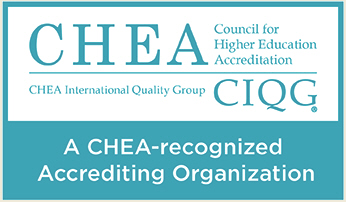REVIEW OF 42 CFR Part 413.85, REGARDING MEDICAL PHYSICS RESIDENCY PROGRAM FUNDING FROM MEDICARE
Prepared by Angela Lee, AAPM
Reviewed By Eric Klein, Chair of CAMPEP REPRC
November 21, 2002
The Medicare Program Payment for Nursing and Allied Education Final Rule appeared in the January 12, 2001 Federal Register. This Final Rule became effective on March 13, 2001. This article will show how the Medicare Program Payment for Nursing and Allied Education regulation applies to medical physics residency programs.
In the past there was a list of approved education groups, but that list has been eliminated, so medical physics residency programs simply need to meet the criteria as set forth by the government in order to receive Medicare payment.
The Medicare Program Payment for Nursing and Allied Education regulation has specifically defined criteria that educational programs must meet in order to receive payment. 42 CFR Part 413.85(c) defines “approved educational activities” as:
| Formally organized or planned programs of study that: |
| (1) Are operated by providers as specified by paragraph (f)
of this section; (2) Enhance the quality of inpatient care at the provider; and (3) Meet the requirements of paragraph (e) of this section for State license or accreditation. |
The Health Care Financing Administration-HCFA (now called the Centers
for Medicare and Medicaid Services-CMS) evaluated materials sent by
the Commission on Accreditation of Medical Physics Educational Programs
(CAMPEP) and believes “that medical physics residency programs
are formally organized, planned programs of study engaged in by hospitals
to improve patient care in an institution (HCFA letter dated March 30,
1999).” The letter goes on to say “if state licensure of
medical physics educational programs is required in a particular state,
the individual program must be licensed to be considered an approved
educational activity. If state licensure is not required [HCFA] will
consider the program to be an approved educational activity if it is
accredited by CAMPEP.” This is consistent with 42 CFR Part 413.85(e)
published in the Federal Register on January 12, 2001.
The most straightforward pathway for a hospital to be paid by Medicare is for the hospital (also called the “provider”) to operate the individual medical physics program. The criteria for these provider operated programs appears in 42 CFR Part 413.85(f). 42 CFR Part 413.85(f) states that:
| (1) | Except as provided in paragraph (f)(2) of this section, for cost reporting periods beginning on or after October 1, 1983, in order to be considered the operator of an approved…education program, a provider must meet all of the following requirements: |
| (i) | Directly incur the training costs. |
| (ii) | Have direct control of the program curriculum. (A provider may enter into an agreement with an educational institution to furnish basic academic courses required for completion of the program, but the provider must provide all of the courses relating to the theory and practice…that are required for the degree, diploma, or certificate awarded at the completion of the program.) |
| (iii) | Control the administration of the program, including collection of tuition (where applicable), control the maintenance of payroll records of teaching staff or students, or both (where applicable), and be responsible for day-to-day program operation. (A provider may contract with another entity to perform some administrative functions, but the provider must maintain control over all aspects of the contracted functions.) |
| (iv) | Employ the teaching staff. |
| (v) | Provide and control both classroom instruction and clinical training (where classroom instruction is a requirement for program completion.) |
| (2) | Absent evidence to the contrary, the provider that issues the degree, diploma, or other certificate upon successful completion of an approved education program is assumed to meet all the criteria set forth in paragraph (f)(1) of this section and to be the operator of the program. |
There is also a pathway for non provider-operated education programs
(42 CFR Part 413.85(g)). 42 CFR Part 413.85(g) states that:
|
To obtain more information about 42 CFR Part 413.85, review the regulation
at http://frwebgate.access.gpo.gov/cgi-bin/getdoc.cgi?dbname=2001_register&docid=01-909-filed.pdf (PDF). To get answers to your specific questions about your residency
program contact your Medicare Fiscal Intermediary or your local Centers
for Medicare and Medicaid Services (CMS) Regional Office.

